Hemianthus callitrichoides
Scientific name: Hemianthus callitrichoides
Family: Scrophulariaceae
Maximum size reached under cultivation: 0 - 5 cm (0 - 1.97 inch)
014
Recommended pH range: 6 - 7.3
Recommended water hardness: 5 - 11°dGH (89.29 - 196.43ppm)
0°C 32°F30°C 86°F
Recommended temperature range: 21 - 27 °C (69.8 - 80.6°F)
Preferred propagation method: Runners
Native to: North America
Growth rate: Fast
Recommended substrate: Fine gravel
Lighting requirements: Bright
Ideal placement in tank: Foreground
Common Names
Dwarf Baby Tears, HC Cuba
Origin
Hemianthus callitrichoides is native to Cuba, making it one of the few aquatic plants originating from the Caribbean region. Although often broadly labeled as North American, its natural distribution is limited to specific areas of the island, where it grows in moist and semi-submerged environments.
Growing Conditions
This species can grow in both submerged and emersed forms. In aquariums, it is most commonly used as a foreground carpet plant when fully submerged. In emersed setups such as paludariums or dry-start aquascapes, it forms slightly sturdier leaves before adapting to underwater life.
Hemianthus callitrichoides requires bright lighting to stay compact and spread horizontally. In lower light, it tends to grow taller and sparser. It thrives best with a CO2 system and nutrient-rich substrate, especially one containing iron. Optimal parameters include a pH range of 6 to 7.3, hardness between 5–11 dGH, and temperature between 21–27 °C (69.8–80.6°F).
Planting Area
Thanks to its tiny size and compact growth, Hemianthus callitrichoides is ideal for the foreground of aquariums. It can be used to create a lush green carpet in nano tanks and larger aquascapes alike. When first planting, gently press small clumps into the substrate using tweezers. Avoid disturbing the plant once rooted, as the stems and roots are very delicate.
Propagation
Hemianthus callitrichoides reproduces by sending out runners across the substrate. These horizontal stems produce new rooted nodes that eventually form a dense carpet. It can also be propagated manually by dividing clumps and replanting them. Occasionally, the plant may develop lateral shoots that contribute to horizontal spreading.
Difficulty
This plant is rated as medium difficulty. While it is not overly fragile, it requires stable water conditions, bright lighting, and CO2 to grow optimally. Without these, it may grow slowly or become uprooted. Its compact growth makes it a favorite among experienced aquascapers aiming for natural-looking layouts.
Short Description
Hemianthus callitrichoides, also known as Dwarf Baby Tears, is one of the smallest-leaved aquarium plants available. It is ideal for creating dense, vibrant foreground carpets in aquascapes. Originally from Cuba, this plant prefers bright lighting, soft to moderately hard water, and CO2 enrichment. While often sold in its emersed form, it quickly transitions to submerged growth in aquariums. Though delicate when planting, once established, it forms a beautiful and natural carpet that enhances any aquascape.
Frequently Asked Questions
-
Why is my Hemianthus callitrichoides floating?
This plant is often sold in emersed form and has very delicate roots. If not properly anchored during planting, or if the substrate is too coarse, the clumps may float to the surface. Use tweezers to bury small portions into fine gravel or aquasoil, and consider placing small weights or mesh temporarily until the plant roots. -
Does Hemianthus callitrichoides require CO2?
While it can survive without CO2, it will grow slowly and may become leggy. For a healthy, compact carpet, CO2 injection is highly recommended, especially in tanks with strong lighting. -
How do I trim Dwarf Baby Tears without uprooting them?
Use sharp aquascaping scissors to trim the tops gently, preferably once the carpet is well-rooted. Avoid pulling or tugging at stems. Frequent light trims help maintain density without disturbing the substrate. -
Can Hemianthus callitrichoides be grown emersed?
Yes, it can be grown emersed in high humidity setups such as paludariums or dry-start aquascapes. In emersed form, the leaves tend to be slightly thicker and rounder, and it transitions to submerged form when flooded. -
What causes yellowing or melting in HC Cuba?
Yellowing may result from insufficient light, poor nutrient availability (especially nitrogen or iron), or unstable CO2 levels. "Melting" (decay of leaves) can happen during the transition from emersed to submerged growth, but the plant usually recovers with stable conditions. -
Is Hemianthus callitrichoides suitable for beginners?
It's best for intermediate aquarists due to its light and CO2 demands. Beginners may struggle to keep it rooted or compact without proper equipment, but with research and patience, success is possible.
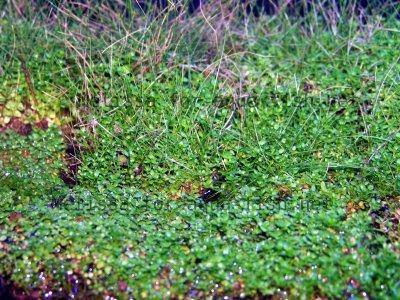


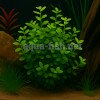 Bacopa australis
Bacopa australis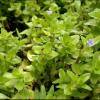 Bacopa caroliniana
Bacopa caroliniana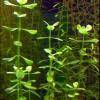 Bacopa monnieri
Bacopa monnieri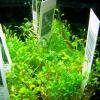 Glossostigma elatinoides
Glossostigma elatinoides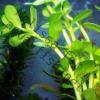 Hemianthus micranthemoides
Hemianthus micranthemoides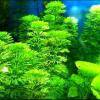 Limnophila aquatica
Limnophila aquatica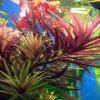 Limnophila aromatica
Limnophila aromatica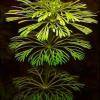 Limnophila sessiliflora
Limnophila sessiliflora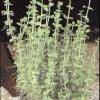 Lindernia rotundifolia
Lindernia rotundifolia